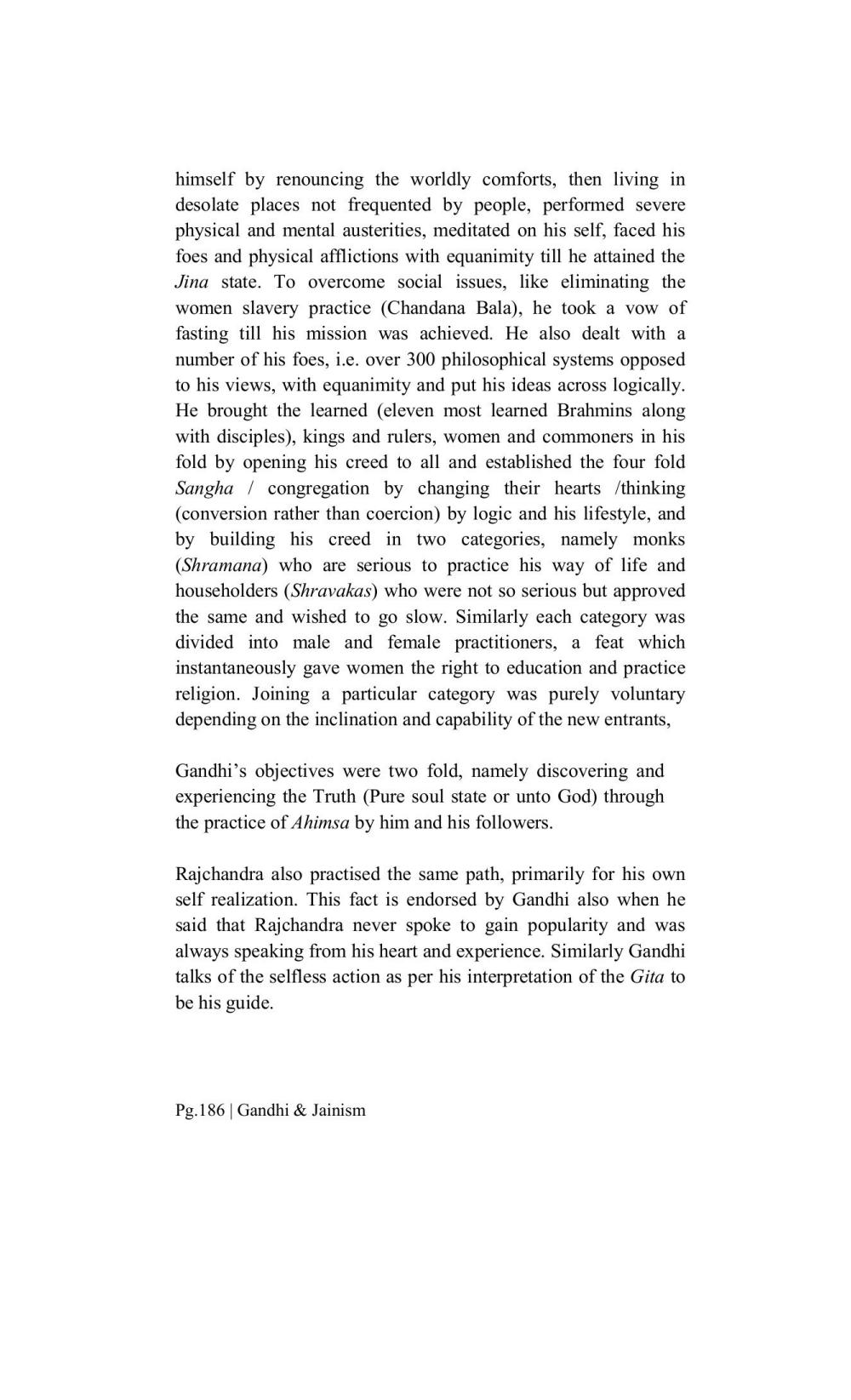________________
himself by renouncing the worldly comforts, then living in desolate places not frequented by people, performed severe physical and mental austerities, meditated on his self, faced his foes and physical afflictions with equanimity till he attained the Jina state. To overcome social issues, like eliminating the women slavery practice (Chandana Bala), he took a vow of fasting till his mission was achieved. He also dealt with a number of his foes, i.e. over 300 philosophical systems opposed to his views, with equanimity and put his ideas across logically. He brought the learned (eleven most learned Brahmins along with disciples), kings and rulers, women and commoners in his fold by opening his creed to all and established the four fold Sangha / congregation by changing their hearts /thinking (conversion rather than coercion) by logic and his lifestyle, and by building his creed in two categories, namely monks (Shramana) who are serious to practice his way of life and householders (Shravakas) who were not so serious but approved the same and wished to go slow. Similarly each category was divided into male and female practitioners, a feat which instantaneously gave women the right to education and practice religion. Joining a particular category was purely voluntary depending on the inclination and capability of the new entrants,
Gandhi's objectives were two fold, namely discovering and experiencing the Truth (Pure soul state or unto God) through the practice of Ahimsa by him and his followers.
Rajchandra also practised the same path, primarily for his own self realization. This fact is endorsed by Gandhi also when he said that Rajchandra never spoke to gain popularity and was always speaking from his heart and experience. Similarly Gandhi talks of the selfless action as per his interpretation of the Gita to be his guide.
Pg.186 | Gandhi & Jainism




